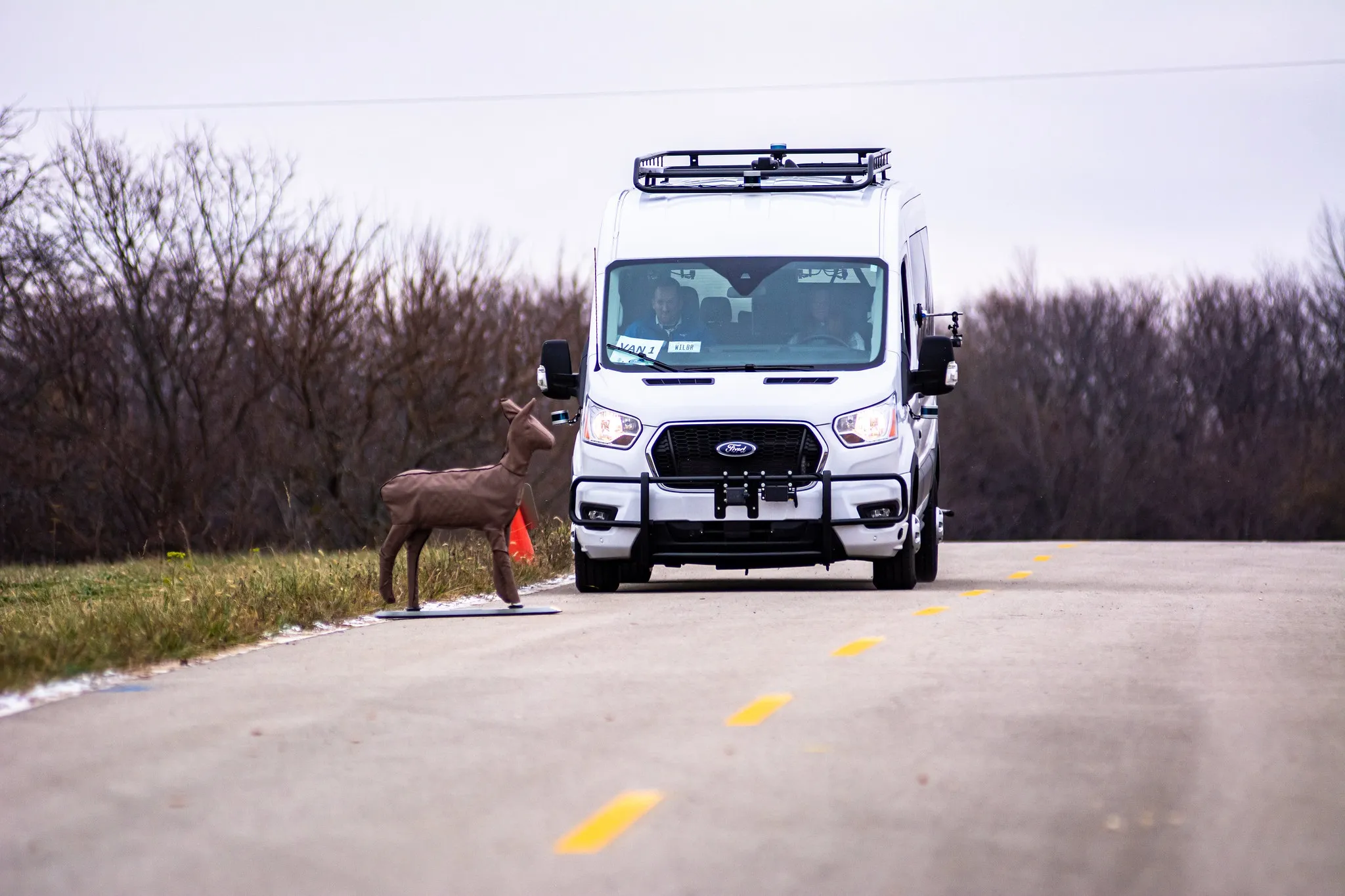A road train, comprised of three Volvo cars plus one truck automatically driving in convoy behind a lead vehicle, has operated on a public motorway among other road users. The historic test on a motorway outside Barcelona, Spain, took place last week and was pronounced a success. “This is a very significant milestone in the development of safe road train technology,” commented Sartre project director, Tom Robinson of Ricardo. “For the very first time we have been able to demonstrate a convoy of autonomousl
May 29, 2012
Read time: 3 mins
RSSA road train, comprised of three Volvo cars plus one truck automatically driving in convoy behind a lead vehicle, has operated on a public motorway among other road users. The historic test on a motorway outside Barcelona, Spain, took place last week and was pronounced a success.
“This is a very significant milestone in the development of safe road train technology,” commented Sartre project director, Tom Robinson of5606 Ricardo. “For the very first time we have been able to demonstrate a convoy of autonomously driven vehicles following a lead vehicle with its professional driver, in a mixed traffic environment on a European motorway.” He went on to say that while many challenges remain to full scale implementation, the project has demonstrated a very practical approach to the implementation of safe road train technology that is capable of delivering an improved driving experience, better road space utilisation and reduced carbon dioxide emissions.
The574 SARTRE (Safe Road Trains for the Environment) project is a joint venture between Ricardo UK, Applus+ Idiada, 5778 Tecnalia Research & Innovation, 5779 Institut für Kraftfahrzeuge Aachen (IKA), 5781 SP Technical Research Institute, 5776 Volvo Technology and 609 Volvo Car Corporation. A road train consists of a lead vehicle driven by a professional driver followed by a number of vehicles. Building on Volvo Car Corporation’s and Volvo Technology's already existing safety systems, including features such as cameras, radar and laser sensors, the vehicles monitor the lead vehicle and also other vehicles in their immediate vicinity. By incorporating wireless communication, the vehicles in the platoon ‘mimic’ the lead vehicle using Ricardo autonomous control, accelerating, braking and turning in exactly the same way as the leader.
The three-year Sartre project has been under way since 2009. All told, the vehicles in the project have covered about 10,000 kilometres. After the test on the public roads in Spain, the project is now entering a new phase with the focus on analysis of fuel consumption.
“We covered 200 kilometres in one day and the test turned out well. We’re really delighted,” says Linda Wahlström, project manager for the Sartre project at Volvo Car Corporation. “During our trials on the test circuit we tried out gaps from five to fifteen metres. We’ve learnt a whole lot during this period. People think that autonomous driving is science fiction, but the fact is that the technology is already here. From the purely conceptual viewpoint, it works fine and road trains will be around in one form or another in the future. We’ve focused really hard on changing as little as possible in existing systems. Everything should function without any infrastructure changes to the roads or expensive additional components in the cars. Apart from the software developed as part of the project, it is really only the wireless network installed between the cars that set them apart from other cars available in showrooms today.”
“This is a very significant milestone in the development of safe road train technology,” commented Sartre project director, Tom Robinson of
The
The three-year Sartre project has been under way since 2009. All told, the vehicles in the project have covered about 10,000 kilometres. After the test on the public roads in Spain, the project is now entering a new phase with the focus on analysis of fuel consumption.
“We covered 200 kilometres in one day and the test turned out well. We’re really delighted,” says Linda Wahlström, project manager for the Sartre project at Volvo Car Corporation. “During our trials on the test circuit we tried out gaps from five to fifteen metres. We’ve learnt a whole lot during this period. People think that autonomous driving is science fiction, but the fact is that the technology is already here. From the purely conceptual viewpoint, it works fine and road trains will be around in one form or another in the future. We’ve focused really hard on changing as little as possible in existing systems. Everything should function without any infrastructure changes to the roads or expensive additional components in the cars. Apart from the software developed as part of the project, it is really only the wireless network installed between the cars that set them apart from other cars available in showrooms today.”










